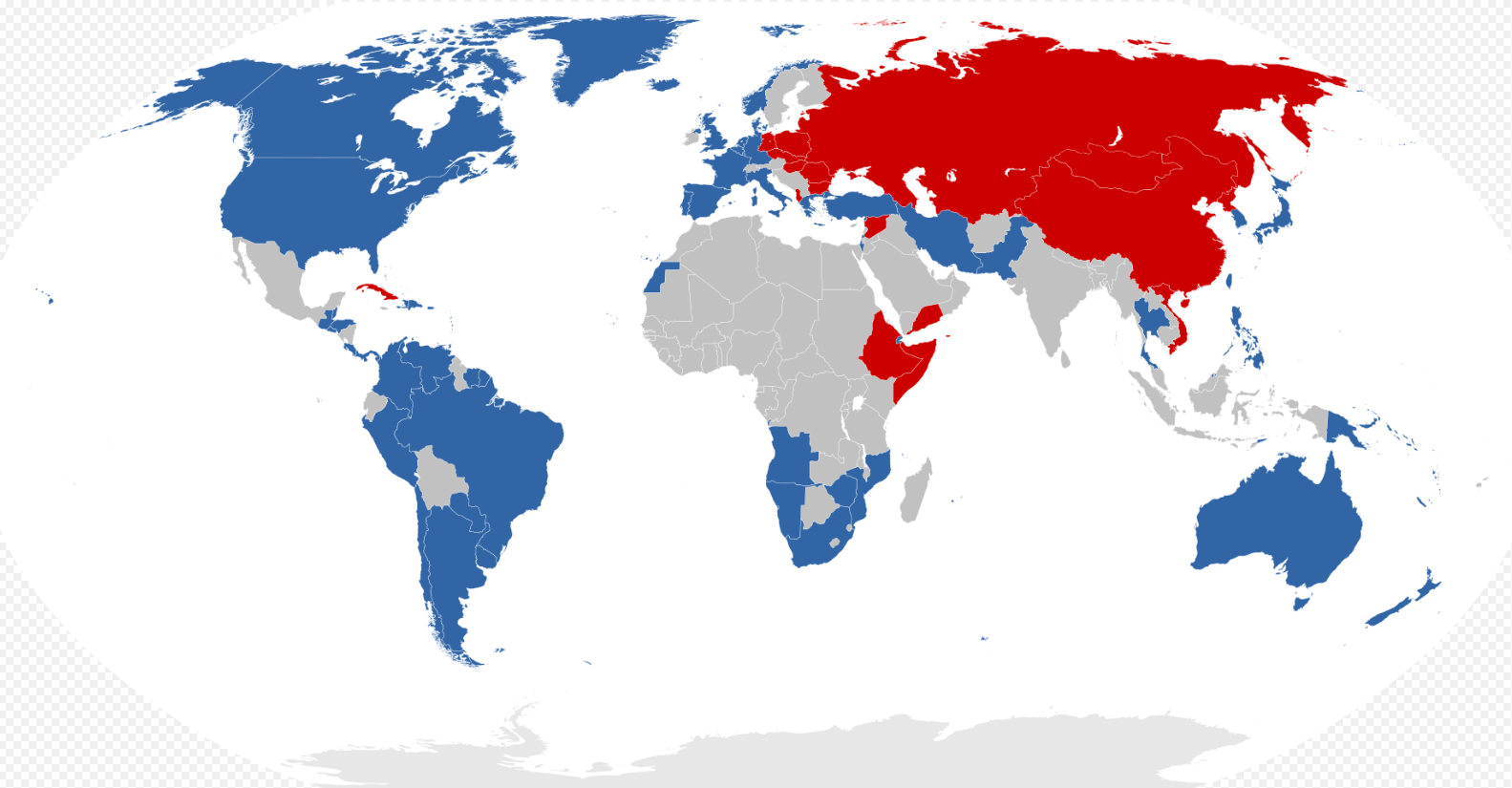The cold war
At the end of World War II and into the early 1990s, an intense period of tension and rivalry emerged between the USA and the Soviet Union. This period was called the Cold War.
Why?
Simply put, the reason for the conflict was ideological and political differences. The ideological struggle between capitalism and communism was central. The USA viewed itself as a champion of individual freedom and market economy, while the Soviet Union emphasized the rights of the collective and state control over the economy. This difference created deep mistrust and resistance between the two superpowers.
"Cold" war?
The term "Cold War" is fitting, as the conflict was characterized by a constant tension without direct military confrontation between the USA and the Soviet Union. Instead, diplomatic maneuvers, propaganda, and economic strategies were used to undermine the opponent. The term "cold" refers to the fact that the USA and the Soviet Union did not engage in direct "hot" combat with each other.
NATO and the Warsaw pact
NATO and the Warsaw Pact symbolized the division of Europe into two opposing blocs during the Cold War. NATO (North Atlantic Treaty Organization), formed in 1949, was created to counter Soviet aggression and protect Europe from threats from the East. Its foundational principle stated that an attack on one member would be regarded as an attack on the entire alliance. In response to NATO, the Warsaw Pact was established by the Soviet Union and its satellite states in Eastern Europe, serving as a military alliance that further solidified the divide known as the "Iron Curtain."
This division defined the geopolitical landscape of Europe during the Cold War, highlighting the intense rivalry between the two superpowers.
Arms race
Both sides invested enormous resources to develop new and more advanced weapons, including nuclear weapons, missiles, submarines, aircraft, and spacecraft. In this arms race, they attempted to outdo each other in technological development and military strength.
Proxy wars
The proxy wars, where the two nations supported different sides in conflicts such as the Korean War, the Vietnam War, and the Soviet invasion of Afghanistan, became a central part of their strategic games. Espionage and sabotage operations were prevalent from both sides.These conflicts often manifested the tensions between the blocs in third countries, leading to extensive humanitarian and political consequences.
Not just military
It was not just military issues that were at the forefront; the USA and the Soviet Union also competed over which social system was superior.
The rivalry extended into space, where the Soviet Union’s early successes with Sputnik and the first humans in space were met with the USA's triumph with Apollo 11 and the moon landing.
The rivalry was also evident in sports, where both the USA and the Soviet Union used every opportunity to push the limits of human performance to stand on the top of the podium and win glory for their country.
Conclusion
When the Soviet Union collapsed in the early 1990s, the political tensions eased, and the Cold War became a part of history.

Blue countries - USA and their allies
Red countries - The Soviet union and their allies
Grey countries - officially neutral
Sweden during the cold war
Sweden was influenced in many ways by the Cold War, despite being officially neutral and not a member of any of the military alliances formed during the period.
Military buildup
Sweden undertook a comprehensive military buildup during the Cold War. There was a need to strengthen its defense capabilities to meet potential threats from the Soviet Union and its allies. Sweden developed a strong defense industry and a general conscription system
A large preparedness organization was built up that could be mobilized in the event of a war.
Foreign policy
To maintain its neutrality, Sweden sought to establish good relations with both the USA and the Soviet Union. Through cooperation with Finland, which was also neutral, Sweden worked to promote peace and stability in the Nordic region and on the international stage.
Peacekeeping
In addition to its work to preserve peace in the local area, Sweden actively engaged in international peacekeeping operations. Sweden sent peacekeeping forces to various parts of the world to promote peace and stability. The Swedish troops had a good reputation and were known for their high quality and competence. The soldiers contributed on-site with development and humanitarian efforts.
Concerns
During this period, Sweden's concerns were mainly focused on two areas: the risk of being drawn into conflict with the Soviet Union, and the threat of nuclear war.
To protect sensitive information and the security of the country, strict regulations were implemented, and certain areas were classified as military protection zones.
This complex dynamic between neutrality and the need to be prepared for potential threats defined Sweden's policy during the Cold War and has had lasting effects on the country's security policy and international relations.